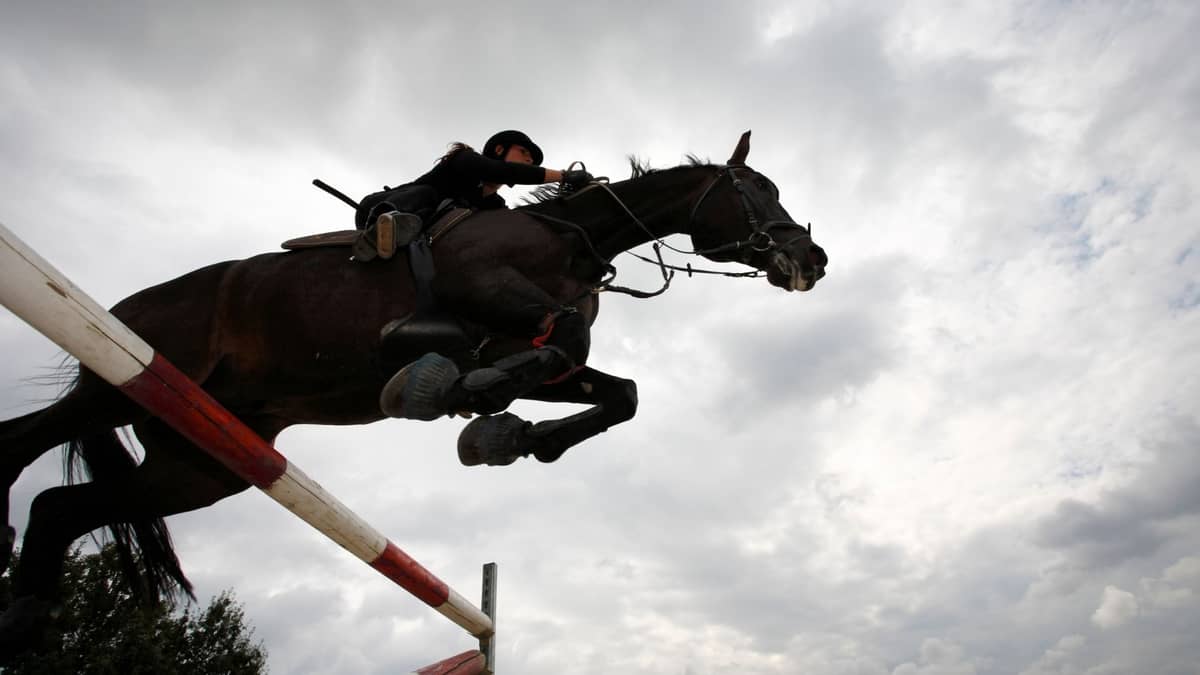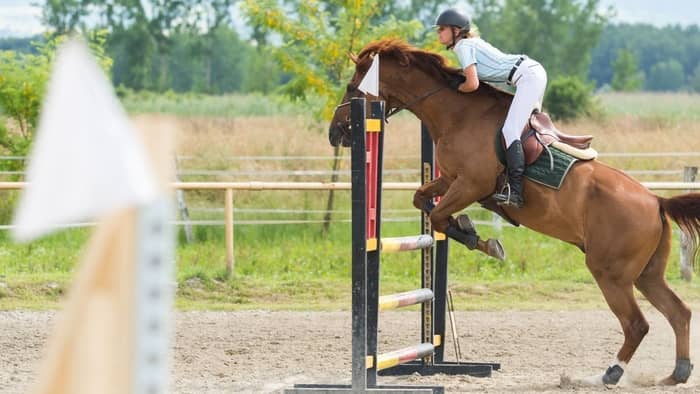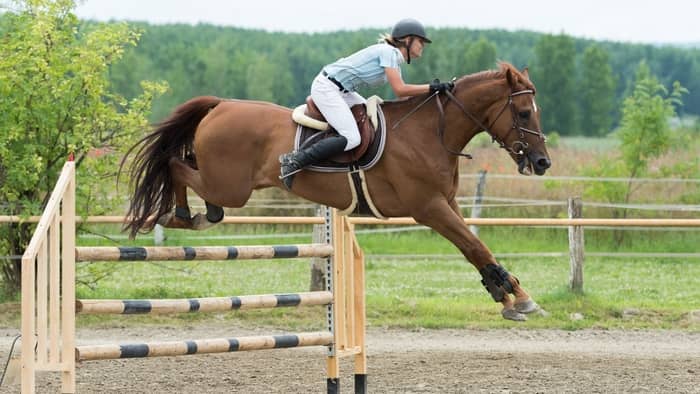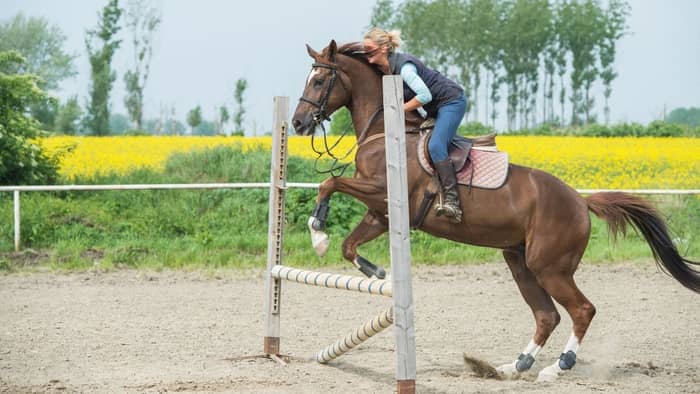Asked to create your first jumping course and know you’re stuck on horse jump course designs? Here’s a quick guide to teach you the basics!
When you’re creating a horse jump course, your number one priority should be that it’s safe. You can include different jumps to make the course fun for horses and their riders.
In this article, I give a brief overview of what most courses include, explain the stages of a horse jump to help you design a better course, and give some basic guidelines to help you teach your horse how to enjoy a jump course!
Horse Jump Course Designs: Guidelines
It’s crucial to design a jumping course for your horse that will encourage them to enjoy learning to jump. Horses and their riders should find the course easy yet challenging.
There are, however, specific rules that your course needs to adhere to. When designing courses, always take special care. Showjumpers, unlike show hunters, do not have the luxury of practicing on the course beforehand. That’s why these basic rules and guidelines exist.
Some of these include adding good corners, adequate distances, and sensibly placed doubles.
The Five Stages Of Horse Jumping
To understand horse jumping better, it’s helpful to break the jump down into stages. This way, you’ll understand how to design a horse jumping course.
The horse and rider must work together and follow the five jumping stages during a course. Each part plays a role in making their jump successful. The stages are:
The Approach: Horses and riders must work together to lean into the jump.
The Takeoff: The horse and rider will leap into the jump at this stage. You’ll notice the horse pulling their hindlegs underneath them to kick off.
The Flight: This is when the horse and rider are airborne.
The Landing: During this stage, the horse and rider start going down towards the ground, and the horse’s forelegs touch down.
The Getaway: As the horse’s back legs touch the ground, they’ll go into a first canter stride to run forward.
Teaching Your Horse How To Jump
Teaching your horse how to jump is a process that requires discipline and patience. You’ll have to start with small steps and work your way from there.
Start by laying poles down on the ground, and walk or canter your horse over them. Once your horse is comfortable with this, you can move to little jumps over the poles.
You can increase the height of each pole as your horse gets the hang of it. Use a lunge line and whip to help your horse understand better.
Trot poles, cross rails, and other canter poles are also good tools to use.
Do Horses Enjoy Course Jumping?
Observing wild horses shows us that they would choose the easy way around an obstacle rather than jumping over it. This, however, differs from horse to horse.
While horses trained to jump will jump, some will enjoy it more than others. Horses that have been trained to jump will mostly choose to do so.
A horse built for jumping has powerful hindquarters and will readily do it. It’s also important to remember that you can’t force a horse to do anything they don’t want to.
Is Course Jumping Good For Horses?
Course jumping can be a good exercise for horses and their riders. Horses can sustain injuries from jumping, but this won’t be common if you follow safety rules.
Master the Basics
Practice the basics of horse jumping with your horse whenever you have a chance. This will strengthen your bond and make it easier to keep your horse under control on a jumping course. Practicing also minimizes their risk for injury.
If your horse isn’t trained, their muscles will be stiff and lack suppleness. They’ll likely experience pain and sustain an injury when jumping.
Focus on Transitions
During a horse jumping course, there are transitions from gait to gait. In some courses, you’ll be judged on these.
Transitions should look effortless and flow. Practicing these also serves as an excellent pre-jump warm-up.
Walk Before Jumping
Always walk a course with your horse before asking them to jump. This will help them familiarise themselves with the jumping course.
You’ll also get a better idea of the stride length between the jumps and the speed you need to maintain.
Work From Small to Big
Always progress from small to large jumps. Never start with large jumps because your horse’s chance of an injury if you do, is bigger.
Remember that both your safety and your horses are important. Never rush into a jump, and always ensure that you have practiced enough. Build mutual trust to ensure the safe completion of any course you and your horse decide to take on.
Final Words
Designing a jump course for horses is quite simple if you keep the basics in mind. There are different examples available for you to follow, and you can take the best from each to create a perfect course for your horse to practice on.
If you have the more difficult task of designing a course for other horses, you can still follow the basic guidelines to help you include the best jumps.
I hope this article was helpful. If you have any more questions about designing a jump course for horses, ask them in the comments!
FAQs
How do you set up a horse jump course?
It's easier to set up a horse jump course when you know what to include. Starts by deciding how many jumps you want in your course and what type they should be. An example of a good setup consists of a single vertical, outside line, diagonal line, and outside line.
How wide should a horse jump be?
An average horse jump is 12 feet wide, but some advanced jumps differ.
How many jumps are in a horse course?
Typical horse jump courses have between 15 and 20 jumps. The least is usually 10 jumps.
How many steps is a double jump?
A double jump consists of two elements.



